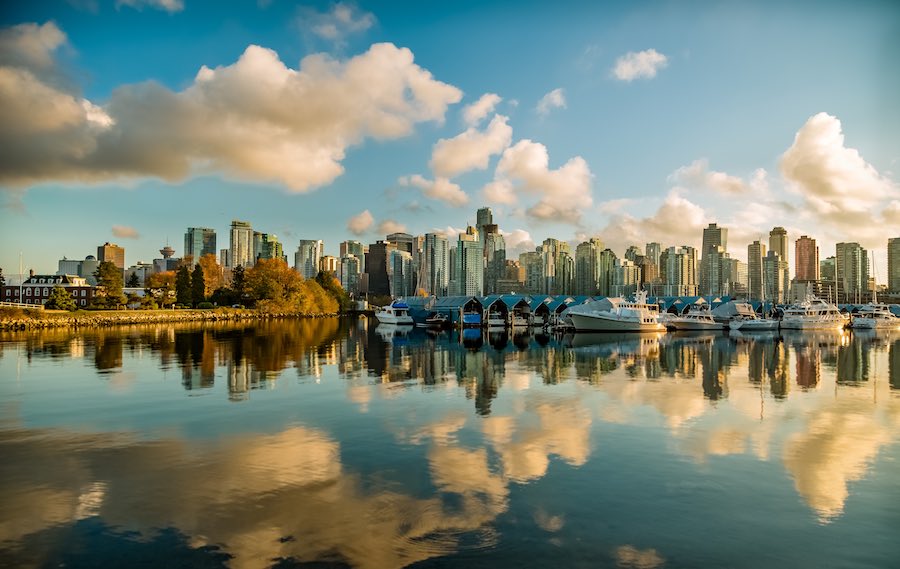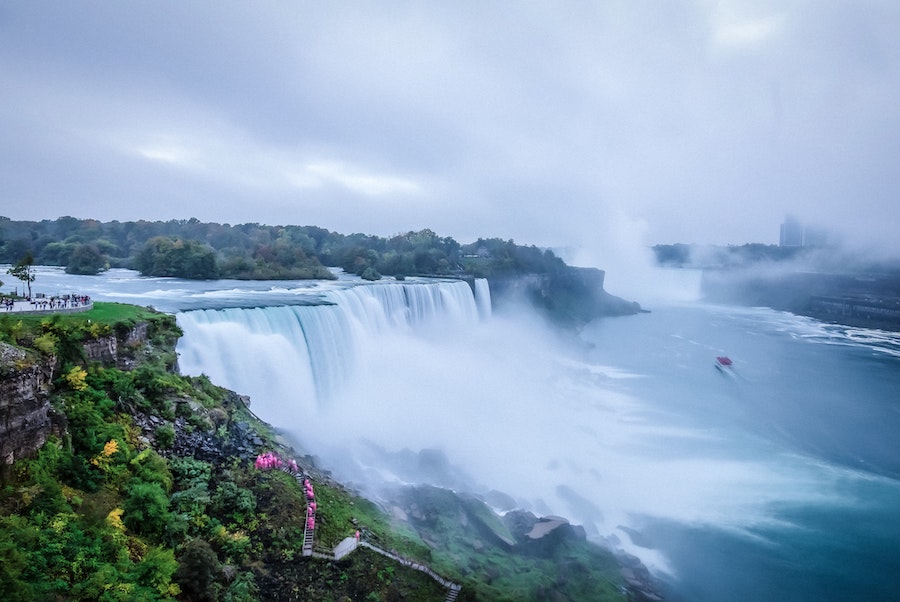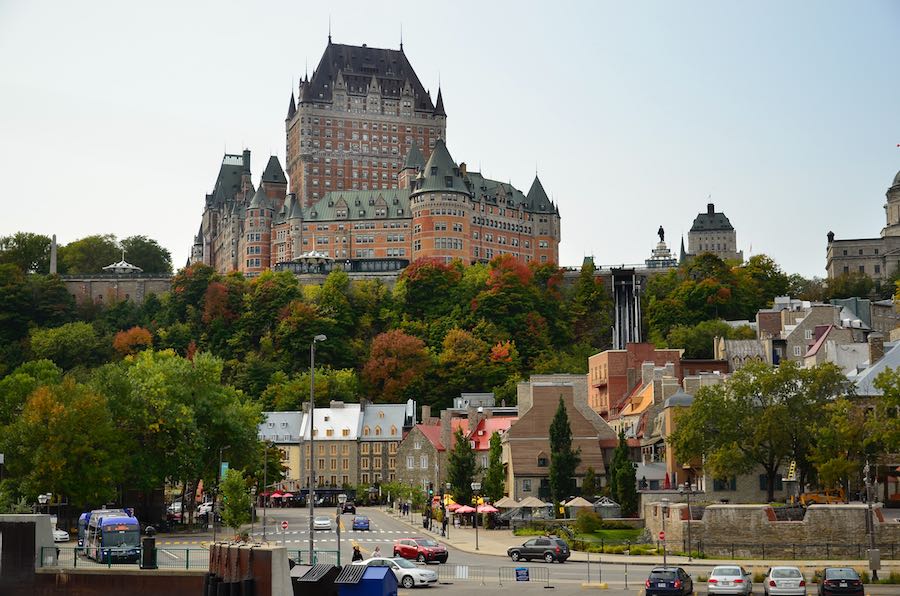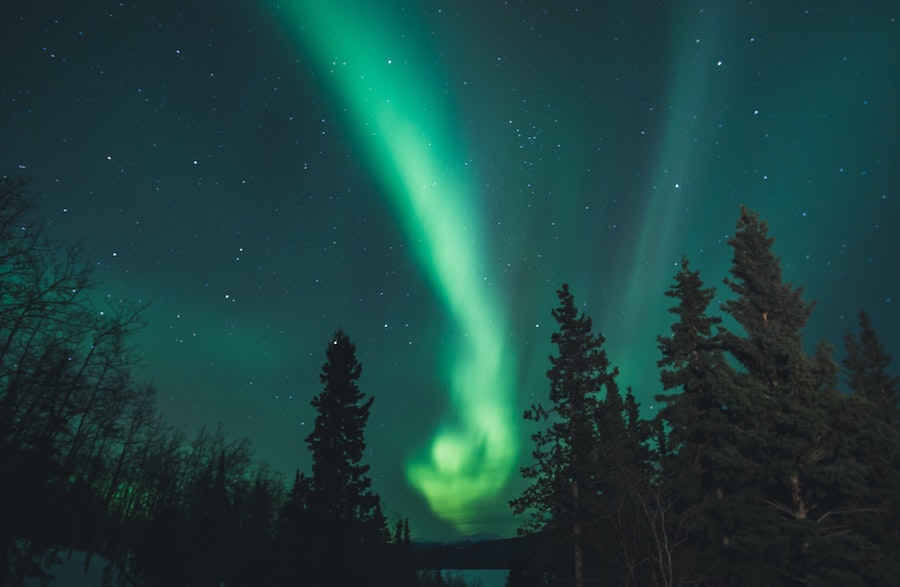Where to Live in Canada
Canada is an enormous country, spanning five and a half time zones and just under 10 million square kilometres. With only 38 million people, that feels like a lot of space, but in reality the majority of Canadians live in dense urban centers within 125 km of the southern border with the United States. Every part of Canada has its advantages and disadvantages; the best place depends on your individual preferences and circumstances. This article explores some things to consider when you decide where you would like to live, and then offers a brief picture of what various regions and cities are like.
RELATED ARTICLES
Family and friends
For many if not most immigrants, getting established in Canada is easier if they settle near people they know who can provide some practical help and companionship during the first difficult months of adjustment. You can always choose to move elsewhere later on, once you are more firmly established in Canada, if you discover good opportunities in a different place where you would prefer to live. If you are the first in your family to make the move, you may want to consider where anyone who follows you will feel most at home. Having someone you can turn to who speaks your language and understands the cultural differences between your country and Canada can be very helpful.
Job/career/educational prospects
Many immigration programs, such as most streams under the Provincial Nominee Programs, require that you have a job lined up before you arrive, so the location of a job will make the decision for you. If that’s not the case, you will want to research what parts of the country are most in need of your skills or profession, or have opportunities available in a field you are interested in. If your intention is to continue your education at a college or university, do some research on the best educational institutions and their locations.
Climate and landscape
People from countries that don’t experience snow are sometimes fearful about whether they can handle a “cold” climate. The truth is, most inhabited parts of Canada have four seasons, with warm or hot summers and winters that range from mildly chilly and rainy to very cold and dry. Canadians are used to living in well-built, well-insulated homes that are comfortable at any time of the year. They also have two wardrobes: one suited to summer heat, the other very warm to keep them comfortable during the worst of winter. If you do as Canadians do and equip yourself with the right clothing, then get out and enjoy the many winter activities available in Canada, you may find yourself actually enjoying the regular change of seasons and finding beauty in each of them. Seeing fresh-fallen snow sparkling in the sunshine is one of the delights of being a Canadian.
Quality of life and cost of living
Canadians generally enjoy a high quality of life across Canada, especially when factors such as peacefulness, good education, free health care, low crime, human rights protections, and the social safety net are considered. Because of federal transfer payments, regions of the country that are economically worse off at any given time receive funding that comes from more economically robust parts of the country. Canada does have its share of poverty and homelessness, particularly in larger cities, where it’s not unusual to see the occasional person sleeping or begging on the street.
One of Canada’s biggest challenges right now is the cost of housing, which is very high in Vancouver and Toronto, regions popular with new immigrants. For this reason, you may want to consider settling in a smaller city where the cost of renting or buying a home is usually lower, making it much easier to get established. You can find out more about quality of life in Canada in our article.
Cultural and religious factors
One of the things that attracts many immigrants to Canada is its policy of multiculturalism, which makes it easier to keep your language and traditions while becoming a part of Canadian life. If attending a church, mosque, temple or gurdwara is an important part of your life, you may want to settle in an area that already has established houses of worship where you can find a community of like-minded people. Similarly, in an area that has many people of your cultural background, it will be easier for you to find food stores, restaurants, and clothing shops selling familiar items, as well as cultural organizations, or even movie theaters playing your favorites, near home. Some cities in Canada have become magnets for particular groups; for instance, Richmond, B.C., is known for its huge Chinese population, and Brampton, Ontario, for its large South Asian community.
But please don’t be afraid to live outside such places, and do get to know Canadians who have a different background. It’s normal for urban neighborhoods and even small towns to contain a wonderful mix of cultures and languages.
Services for immigrants
If you feel you may need a lot of support with adapting to Canada, one of Canada’s many settlement services organizations can be a helpful resource. There are also many organizations created specifically to cater to the needs of particular cultural groups. Designed to help immigrants and refugees, these offer a broad variety of services, from language classes and employment assistance, to mental health programs and shelters for victims of domestic violence. You are more likely to find these services in larger cities.
Preference for urban/suburban/rural life
Only you know what you would prefer: the energetic pace of a crowded city like Toronto, with plenty of public transit and other services; or the more relaxed lifestyle of a smaller city like Winnipeg (Manitoba), Halifax (Nova Scotia) or Saskatoon (Saskatchewan), with more space and a lower cost of living; or even the quiet, more personal atmosphere of a small town or rural area. Canada even has a special option for skilled-worker immigrants interested in settling in smaller towns and cities called the Rural and Northern Immigration Pilot. Every part of Canada has opportunities for resourceful newcomers, and about 44% of immigrants settle outside the big cities.
British Columbia (B.C.)
This large western province, especially popular with tourists, is a place of great natural beauty and home to about 5.2 million people. Bordering the Pacific, it is nearly 58% forested, with several mountain ranges running north-south and scores of mountain lakes. Notable areas of the province include Vancouver Island, the largest of the many coastal islands, known for its temperate rainforests, gorgeous beaches and the provincial capital of Victoria; the Lower Mainland area, home to Vancouver and numerous suburban cities; the Fraser Valley, famed for its vineyards and berry farms; Haida Gwaii, a group of islands that preserve ancient forests and artifacts such as totem poles of the Haida First Nation culture; the Okanagan Valley, which grows cherries, apples and other fruit; the skiing mecca of Whistler; and Canada’s only true desert, in the southernmost Osoyoos area. The east side of the province shares the great Rocky Mountain range with Alberta and several huge national parks.
B.C. includes more than 200 First Nations communities and is home to one in six Indigenous people in Canada. Because of their concern for protecting the environment, they often play a big role in the politics of the region. Many other BC residents trace their roots to Scotland, England, France, Germany and Ukraine, with significant populations from China and India.
B.C. has a broadly diversified economy, with Canada’s lowest unemployment rate (before the pandemic), a well-educated, multilingual workforce, and lots of opportunities in service industries and growing fields such as green tech.

Prairie Provinces
Alberta, Saskatchewan, and Manitoba are known as the Prairie pProvinces. This sprawling region, which stretches from the Rocky Mountains on the west to the border of Ontario on the east, is home to more than 6.7 million people and is Canada’s “bread basket,” a region of cattle ranches and thousands of hectares of wheat and other grain crops, the northern areas being more forested. It is mostly flat or rolling terrain, broken by a few major cities and lots of small towns and villages. The Prairies, reflecting the early European settlement patterns, are perhaps the least ethnically diverse part of Canada, yet one in ten residents is a “visible minority,” and cities like Edmonton and Calgary have significant Black populations.
Notable points of interest in these three provinces include the famous national parks of Banff and Jasper in Alberta’s Rockies, the capital cities of Edmonton (Alberta), Regina (Saskatchewan) and Winnipeg (Manitoba); the Calgary Stampede, the world’s best-known cowboy rodeo; The Forks, a Winnipeg gathering place where two great rivers of the prairies, the Red and the Assiniboine, flow together; and the Canadian Human Rights Museum, another landmark in Winnipeg and a symbol of Canada’s commitment to human rights.
Beyond the primary industries of cattle ranching and agriculture, the economies of both Alberta and Saskatchewan are heavily reliant on the oil industry.Mining of potash and uranium as well as natural gas are also important to the Prairie economy. Manitoba, with a somewhat wetter climate than the other two provinces, is dominated by agriculture as well as transportation, mining and forestry industries.
Ontario
Canada’s most populous province is blessed with abundant resources and is also its manufacturing and technology heartland. Agriculture, mining, automobile manufacturing, information and communications technologies, biotech, pharmaceuticals and medical devices are all important parts of its economy.
The north of the province is dominated by the Canadian Shield, a rugged region of ancient rocks, trees and lakes (the province has some 250,000 lakes!). This sparsely populated area is rich in minerals, and mining and forestry are dominant parts of the economy. Most Ontarians live closer to the US border, where the most southern point of Canada dips to a latitude equivalent to northern California. This is a region of rich, rolling farmland with a mixture of grain and vegetable crops, orchards, vineyards, dairy cattle and other food production. A densely populated region called the Golden Horseshoe, which curves around the west end of Lake Ontario, is a hub for manufacturing. The portion of it known as the Toronto-Waterloo Tech Corridor is Canada’s equivalent of Silicon Valley. On the east side of the province is Ottawa, the capital city of Canada, bordering the province of Quebec.
Notable landmarks of Ontario include the famous Niagara Falls, which lies on the border with the United States; Algonquin Provincial Park, a large, scenic park filled with forests, wildlife and scores of small lakes, popular for camping and canoeing.
More than 40% of Canada’s population, 14.5 million, live in Ontario. Virtually every nationality on Earth is represented in Ontario’s cities, and it is not unusual to hear Persian, Urdu or Tagalog being spoken alongside English and Mandarin on a public bus.

Quebec
Quebec is the longest-settled part of mainland Canada, dating to the founding of Quebec City in 1608 by Samuel de Champlain, a French explorer. It was a colony of France until 1763, when it was ceded to Britain after a long conflict between the two European nations. Later, other parts of today’s Canada were largely colonized by English-speaking settlers, leaving Quebec — and the French language and the French legal system established there — as more and more a minority in the Canadian Confederation.
It’s important for immigrants to understand this history, as it explains why Canada is officially a bilingual country, where children are taught both French and English in school and being fluent in both languages is an asset in many jobs. It also explains why the people of Quebec often regard themselves as a nation within a nation, a separate people with their own ways of doing things and the right to preserve their language and traditions.
Briefly in the 1970s, a terrorist group arose seeking to separate Quebec from Canada, and referendums in 1980 and 1995 resulted in a narrow decision not to leave the country. Enthusiasm for separation has waned since then, partly because of constitutional changes. Quebec was recognized as a “distinct society” and eventually got the freedom to regulate everything from signs (French dominant) to what kinds of immigrants would be accepted to the province. If you choose to immigrate to Quebec, you will need to go through an extra step of approval from Quebec’s own immigration authority. You will also be expected to send your children to French-language schools and abide by other laws intended to protect Quebec’s unique language and culture, including a recent (and controversial) law that prohibits the wearing of religious clothing (for example, hijabs or yarmulkes) by government employees, such as teachers.
Quebec’s two major cities, historic Québec City and bustling, bilingual Montréal, both lie in the south on the St. Lawrence River. Some highlights of Quebec include the original city walls and historic buildings in the Old City of Quebec; the Canadian Museum of History in Gatineau, across the river from Ottawa’s Parliament; Mont-Tremblant and other ski resorts in the Laurentian Mountains and many others.
Most Quebec residents (about 6.8 million out of 8.2 million) describe their ethnicity as either Canadian, French or Québecois, with significant numbers having British, Italian, Chinese, Haitian, Spanish, Polish, Lebanese, Portuguese, Belgian and Indian roots. About 270,000 are Indigenous. But, as in other parts of Canada, there are many other nationalities represented.
Manufacturing and services are dominant sectors of the economy of Quebec, which generates 20% of Canada’s GDP. About 1.1 million people are employed in science and technology fields. Aerospace, ground transportation, optics and biotech industries are especially important.

Atlantic Provinces
Though much smaller, the provinces of Nova Scotia, New Brunswick, Prince Edward Island and Newfoundland & Labrador are a special part of Canada. Each has a unique culture and attraction for international visitors. Popular highlights include the scenic drive around Nova Scotia’s Cape Breton Island, the spectacular fjords and ancient Viking settlement in western Newfoundland, and the tides in New Brunswick’s Bay of Fundy, the highest in the world, which routinely leave small islands known as The Flowerpots high and dry.
The original French settlers of the large peninsula of Nova Scotia, known as the Acadians, were expelled after the British took over Canada, and many migrated to Louisiana. Some 30,000 Loyalists, including Black former slaves, took their place in Nova Scotia after the American Revolution. Nova Scotia is a scenic province known for its apple orchards, seafood, and tourism. Major parts of the economy include the fishing industry, defense and aerospace industries, and gypsum mining.
Many of the expelled Acadians eventually returned to what is now the province of New Brunswick, along with a large influx of Loyalists from the American colonies and other settlers from Wales and Ireland. As a result, French remains a significant language in this officially bilingual province of 780,000 people. New Brunswick has huge tracts of wilderness, with rivers and forests, as well as historic cities, including the capital, Fredericton.Forestry, mining and fishing are the biggest industries in New Brunswick, with tourism, agriculture and small-scale manufacturing also important.
Prince Edward Island played host to the 1864 conference that created the country of Canada, but the tiny colony declined to join for nine more years. Today, this lovely island, known for its red soils, lobster harvest, green potato fields, wide sand beaches and blue seas, is a tourist mecca. With a population of only 157,000, the province attracts about 2,000 immigrants per year.
Newfoundland & Labrador joined Canada only in 1949, after more than 300 years as an outpost for European fishermen and British colony. Known as “The Rock” for its rugged landscape, Newfoundland has a unique culture, with its own humour, music, traditions and accents. St. John’s, the capital, is a lively city with buildings painted in brilliant colours, clustered around an ocean inlet where whales spout and icebergs occasionally float by. Small “outport” fishing villages are scattered around its coastline. Like Nova Scotia, Newfoundland often catches the frigid end of Atlantic storms and can be cold and snowy in winter, and cool and foggy in summer.
A flight or long ferry ride will take you to the island of Newfoundland, but Labrador is on the mainland, east and north of Quebec. Newfoundland’s traditional economy was based on fishing, but the province has suffered economically from declining cod stocks. Residents often migrate to mainland Canada to find work. Mining (mainly iron ore in Labrador), offshore oil drilling, pulp and paper, hydroelectricity production and tourism are other important industries. Newfoundland’s 520,000 people are mostly descended from the original English and Irish settlers. About 1,500 people immigrate to Newfoundland per year.
Northern Canada
Some adventurous immigrants choose to go to one of Canada’s vast northern regions, which make up 48% of its land mass: Yukon, Northwest Territories (NWT), and Nunavut. This starkly beautiful region contains several huge national parks, thousands of lakes and rivers, mountain ranges, and scattered communities that total only about 128,000 people, most of them not accessible by road. Summers are mild and the sun shines nearly around the clock; winters are very cold and dark. Nunavut, which takes up the eastern half of Canada’s north, is home to the Inuit people. The largest town is Whitehorse, Yukon, with just over 25,000 people. These regions are important to Canada’s economy especially for their mineral wealth, including the famous diamond mines of NWT.

Major Cities in Canada
Here’s a quick look at some of Canada’s top cities, and what to expect, starting from the west and moving east.
- Vancouver: The population is 2.5 million. A scenic oceanside city overlooking several bays, with a highrise downtown framed against forested mountains. This home to the 2010 Winter Olympics is beautiful and prosperous, with clean air, mild winters and frequent light rain, and ideal for outdoors enthusiasts who like activities such as skiing, sailing and hiking. It has an efficient transit system built around the Skytrain, an elevated light rail system. But it also features Canada’s highest housing costs, making it unaffordable for many immigrants. (According to numbeo.com, consumer prices including rent are 4% higher than in Toronto, the second most expensive city.) Suburban cities in the metropolitan Vancouver area, including Richmond, New Westminster, Burnaby and Surrey, may be somewhat less expensive to live in. Largest minority ethnic groups are “East Asian” (23%) and “South Asian” (12%).
- Edmonton: The population is 1.16 million. This lovely capital city of Alberta, located on the boundary between the prairies and the boreal forest, is the farthest north of Canada’s major cities, but not the coldest. It has dry, warm summers and cold, sunny winters. Bisected by the North Saskatchewan River, it takes pride in its “ribbon of green” connected parklands. Edmonton has a diverse economy with a focus on the oil and gas industry as well as technology and research. According to numbeo.com, rents in Edmonton average 46% lower than in Vancouver. Largest non-European ethnicities are South Asian (9.5%) and Chinese (6.3%).
- Calgary: The population is 1.34 million. This sprawling city, which hosted the 1988 Winter Olympics, is the center of “cowboy” culture in Alberta, with its famous annual Calgary Stampede rodeo. It hosts the headquarters of many companies in Alberta’s oil and gas industry and suffers when the oil industry is in a slump, as it was during the pandemic. Bisected by the Bow River, with the Rocky Mountains as a distant backdrop, Calgary is the sunniest city in Canada, with warm, dry summers and milder winters than some places in Canada. According to numbeo.com, rents average nearly 40% lower than in Vancouver. About 61% of people in Calgary are of European descent, with smaller numbers of South Asians (9.5%), Chinese (8.3%), and Filipino, Black and Latin American residents.
- Winnipeg: The population is 779,000. This capital city of Manitoba, which sits close to the geographical center of Canada, is quite flat and has two major rivers, the Red and Assiniboine, winding through it. It has hot, dry summers and very cold but sunny winters, which lend themselves to winter sports such as cross-country skiing and ice fishing. The city offers many cultural attractions, including a ballet company, symphony and theatre companies, as well as the Canadian Museum of Human Rights. According to numbeo.com, apartment rents are less than half the cost of those in Vancouver. Immigrants represent about 25% of the city’s residents, with significant numbers of Filipinos (10.6%), South Asians (5.4%), and Black, Chinese and Southeast Asian residents. Winnipeg also has one of the largest Indigenous populations in Canada, at 12.5%.
- Toronto: The population is 5.9 million. The capital city of Ontario, which includes a port on Lake Ontario, is Canada’s largest and one of the most multicultural cities in the world. The city is relatively flat but has ample parkland, including offshore islands, and two major rivers. It enjoys a true four-season climate, with hot summers and moderate winters. Toronto and its more suburban neighbors, including Mississauga, Vaughan, Brampton, Markham and others, form the Greater Toronto Area (GTA). Important cities nearby include the steel-producing city of Hamilton and the high-tech hub of Waterloo. The GTA is Canada’s financial capital; it produces half of the country’s manufactured goods and is the country’s primary wholesale and distribution point. Together with Vancouver, it’s a major center for the film industry and hosts one of the top international film festivals each year. Toronto is a huge startup hub, home to more than 15,000 tech companies, and the third-largest center for information and communications tech in North America. Its Discovery District is a hub for biotech, including the city’s top hospitals and medical research institutions. One of Toronto’s biggest problems is a shortage of affordable housing. According to numbeo.com, rents average about 8.3% lower than Vancouver but higher than any other Canadian city. About half of the GTA population is foreign-born.
- Montreal: The population is 4.1 million. Greater Montreal is Canada’s second largest urban area. It’s also the second largest French-speaking city in the world after Paris, though only 73% of Montreal residents regard French as their first language. Set on an island in the St. Lawrence River, Montreal is dominated by Mont Royal, a three-peak hill, and has a picturesque Old City. The city enjoys warm summers and cold, snowy winters. Rent is, on average, 38.5% lower than Toronto, according to numbeo.com. Montreal has the world’s largest inland port and is one of North America’s top centers for aerospace industries; other important industries include pharmaceuticals, manufacturing, electronics, manufacturing and transportation. This cosmopolitan city is known for its arts and culture, and it includes several mainly English-speaking neighborhoods as well as Chinatown, Little Portugal, Little Italy and other ethnic enclaves.
If you consider moving to Canada, contact us, and our team of professionals will help you navigate in the process of immigrating to Canada. We will review your background and provide you with a realistic assessment of your chances of success. If you decide to pursue one or more immigration programs, we can manage your application and all related tasks.
If you are unsure about your likelihood of success, contact us for a free evaluation. If you still have any other questions that are not addressed in this article, please contact us and we will be happy to help.
